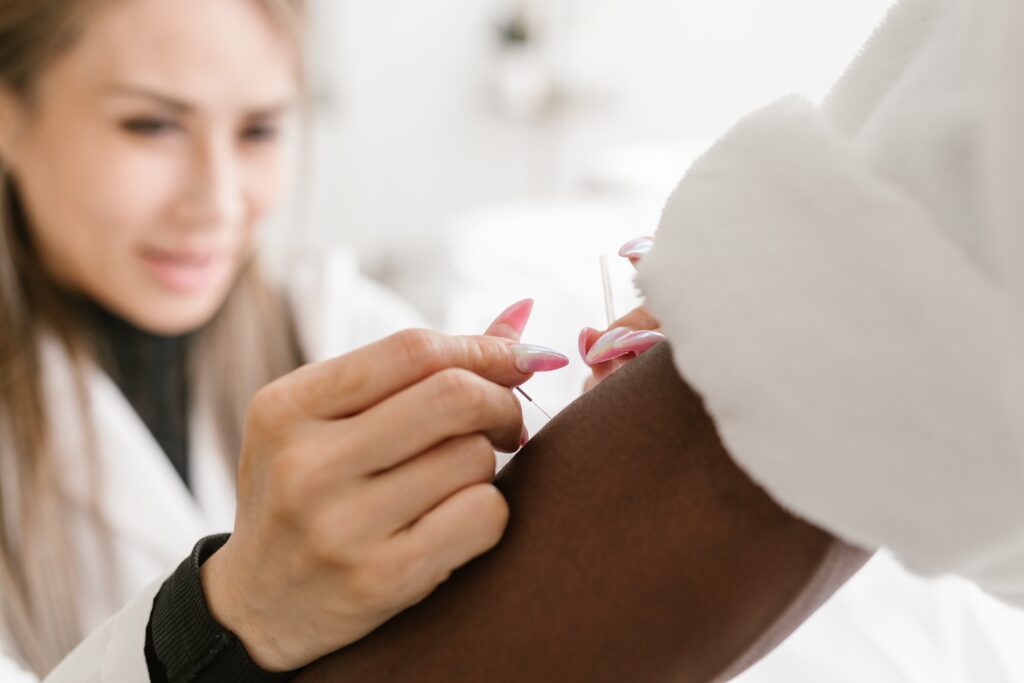Dry Needling In Physical Therapy: What You Should Know
Are you considering dry-needling physical therapy? This form of treatment is becoming increasingly popular in the physical therapy world, as it can help improve pain management and muscular issues that may have been caused by injury or illness. In this article, we’ll explore this technique and its efficacy so you can make an informed decision about your care.
What Is Dry Needling:
Dry needling physical therapy is a form of treatment that uses small needles to stimulate your muscles. It works by targeting certain trigger points, which are areas in the muscle that have become tight or tense due to injury, overuse, or other causes. By stimulating these points, it can help relax the surrounding tissue and reduce pain and tension.
The Science Behind Dry Needling:
The science behind dry needling is based on the idea that when certain trigger points are stimulated, it can help reduce pain and improve overall muscle function. Research has shown that this form of treatment can be very effective at reducing pain, improving range of motion, increasing flexibility, and helping to heal injuries.
Benefits and Uses of Dry Needling in Physical Therapy:
Dry needling physical therapy has a variety of benefits, including improved pain management, increased range of motion, and decreased tension. It can be used to treat a wide range of issues, such as muscle spasms, tendinitis, sciatica, whiplash injuries, and many more. It can also be used to help prevent future injuries and improve overall performance in athletes.
The Dry Needling Procedure:
Dry needling is a relatively quick procedure that usually takes about 10-30 minutes, depending on the area being treated. The needles are inserted into the affected area and then slowly manipulated by hand or with an electrical current to stimulate the muscle. It’s important to note that dry needling is not acupuncture, as it does not involve any herbal remedies or traditional Chinese medicine.
Risks and Side Effects:
Dry needling has a very low risk of side effects and is generally considered to be safe when administered by a qualified practitioner. The most common side effects are mild bruising and soreness at the site of the needle insertion. In some rare cases, an allergic reaction or infection can occur. It’s important to speak with your doctor before starting this type of treatment to ensure that it is right for you.
Comparisons with Other Techniques:
Dry needling is different from other types of physical therapy. It uses a needle to target specific muscle groups, whereas traditional therapies use stretching, strength training, and hands-on techniques. It also has the advantage of being able to reach deeper layers of muscle tissue that cannot be accessed with manual manipulation.
Training and Qualifications for Practitioners:
Dry needling is an advanced technique and should only be used by practitioners who have been properly trained and certified. Generally speaking, the practitioner must possess a doctorate in physical therapy or a related field in order to practice dry needling.
Conclusion:
Dry Needling Physical Therapy can provide many benefits for those suffering from chronic pain or muscle issues. It is a safe and effective technique that can be used to target deeply embedded muscles. This treatment should only be performed by qualified practitioners in order to ensure the best results.
10 Common Dry Needling Questions
What’s the difference between dry needling and acupuncture?
Dry needling and acupuncture are separate practices with different goals. Acupuncture is a practice rooted in traditional Chinese medicine, focusing on the body’s energy or ‘chi’. Dry needling, on the other hand, directly targets specific muscles or tendons to alleviate pain.
Is dry needling painful?
The experience varies from person to person. Some might feel a slight prick upon needle insertion, but generally, it’s less painful than anticipated due to the thinness of the needles used.
Does dry needling work?
Dry needling can be effective for many people, especially for those seeking relief from muscle pain and stiffness. However, like all treatments, its effectiveness can vary from person to person.
Is dry needling safe during pregnancy?
Safety during pregnancy should always be discussed with a healthcare provider before starting any new treatment, including dry needling.
Can dry needling help with nerve damage?
Though primarily designed to relieve muscle and tendon pain, some individuals find dry needling beneficial for nerve damage as well. This should be discussed with a healthcare professional based on individual needs.
How many dry needling sessions will I need?
The number of required sessions depends on the individual’s condition and response to the treatment. This is best determined by a qualified therapist.
What does dry needling feel like?
Some describe the sensation of dry needling as similar to a light mosquito bite without the subsequent itching. During treatment there can be some feelings of muscle cramping but treatment can be varied to change the intensity if you are having difficulty with sensation.
Why is dry needling illegal in some states?
Laws regulating dry needling vary by location. It’s important to check local legislation before seeking this type of treatment.
Can dry needling help with arthritis?
While dry needling is not a cure for arthritis, some people find it helpful in managing their arthritis pain as part of a comprehensive approach to pain management.
Is dry needling the same as acupuncture?
Despite both practices using needles, they are not the same. Acupuncture is rooted in traditional Chinese medicine and focuses on energy balance, while dry needling is a modern practice aimed at easing muscle pain.

